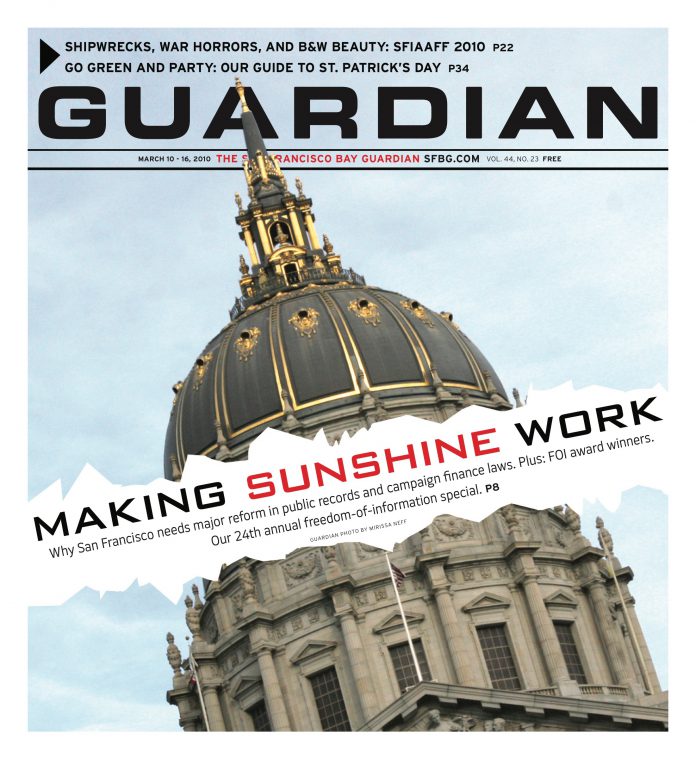arts@sfbg.com
DANCE Conceptual art and minimalism are not usually associated with dance. Yet the terms frequently swam into consciousness at last weekend’s three choreographers program at Theater Artaud. Spare, rigorously crafted works by Hope Mohr, Molissa Fenley, and Yvonne Rainer made for an unusually satisfying evening of mostly pure dance. Mohr presented the program in the context of her company’s "third home season: three generations."
Rainer’s 1966 Trio A is a legendary work, originally performed by three dancers as part of Judson Church Dance’s revolutionary rethinking of the art form. It consists of a single, intricately structured, four-and-a-half minute dance phrase, presented impersonally and as evenly on keel as possible. As performed — out of sync — by Mohr and Robbie Cook, Trio A offered different perspectives on the same material. Watching it felt like observing two Rubik’s cubes in action, and it was totally involving.
In the second version, Trio A Pressured, Cook assumed the role of an obstacle trying to push Mohr, who was repeating the phrase, out of her single-minded commitment. He hopped in front of her, mirrored her movements, and acted like a mechanized clown. Although not that interesting in itself, it turned Mohr into something akin to a sleepwalker.
Hope turned the middle part of this so-very-welcome program over to Fenley, who has been making pristine, tightly built solos for more than 30 years. Mass Balance is her latest piece, designed for herself and a very long white pole.
Fenley moved little — a couple of pawing step here, slight turns of positions there. Most noticeable were her hands: they are gnarled but strong, with fingers that curl like roots that have grown around a foreign object. By the end of Mass, the pole was no longer a stranger. As she quietly held it with an outstretched arm, it became an extension of her body even as she got ready — but didn’t — to let it go.
In her gray tunic and pants, Fenley had something of a priestess about her. Yet that thing in her hands talked a lot. It became a ballet barre, an oar, an offering, something that welcomed a caress, a challenge to be controlled, perhaps even wings. Even if you were not imagistically inclined, the beauty of Fenley’s reserve and her mastery over time and space were enough. I’m not even sure she needed Cenk Ergun’s electronic score.
Mohr named her new Far From Perfect accurately. This quintet is not perfect, but it’s very good — her best work yet. Most satisfying was to see how carefully she shifted gears and opened the complex subject about the nature, and process, of making art into a contemplation of the pain human beings inflict on each other. These two subjects do not naturally go together, but Mohr made sense of the connection.
The first part, with its shifting relationships in which dancers constantly reconfigure space, was pure dance — economical, linear, fluid. But small inconsistencies crept in. They were like the first raindrops you aren’t quite sure you felt. When Emily Hite quit the stage, we were left with two couples, and lightning struck. They kicked, threw, and imprisoned each other, tearing apart connections but also hugging until the tempest passed and one woman was left weeping.
The dancers (Hite, Laura Blakely, Derek Harris, Cameron Growden, and Tegan Schwab), the collaged music, and the text — a compilation of Mohr’s writing and a poem by Brenda Hillman — were excellent. At 50 minutes, Far can be tightened; it should be seen again.

